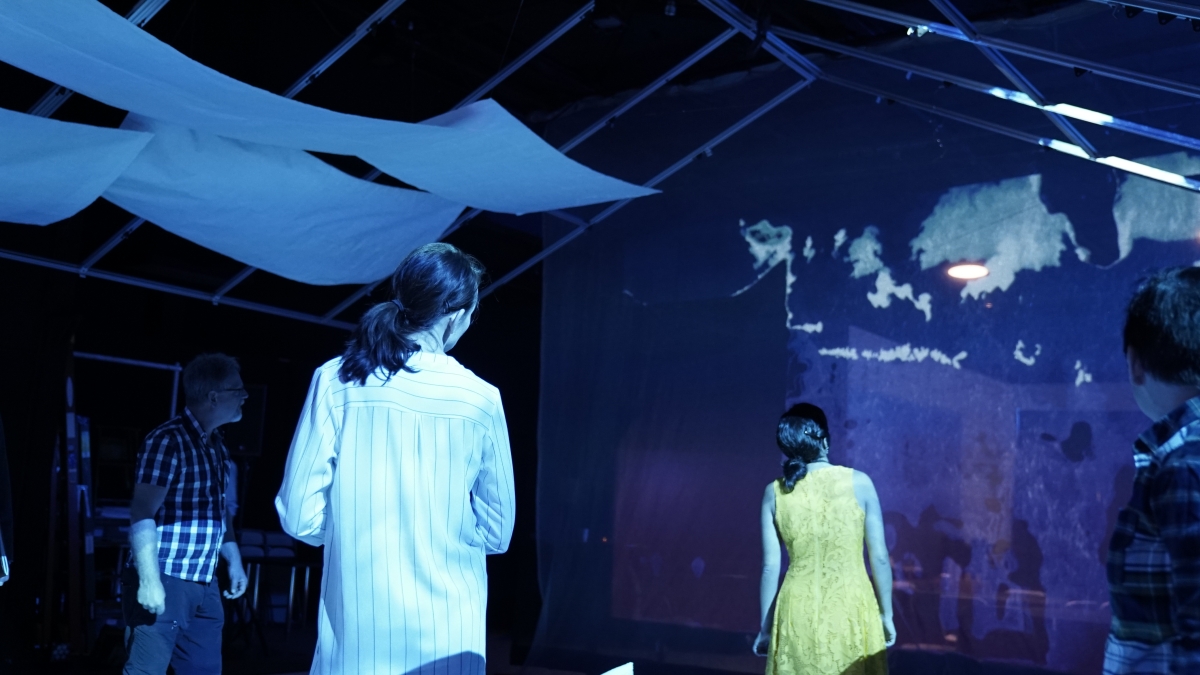ASU Synthesis Center featured at interdisciplinary symposium

Participants immerse themselves in the enchanted environments of iStage, featuring projects such as SERRA and Experiential Models of the Atmospheres. Courtesy photo.
Faculty from the School of Arts, Media and Engineering, a transdisciplinary unit at Arizona State University formed between the Herberger Institute for Design and the Arts and the Ira A. Fulton Schools of Engineering, will present work from the school’s Synthesis Center at the Living Architecture Systems Group Symposium in Toronto.
The Living Architecture Systems Group is an interdisciplinary partnership of academics, artists, designers and industry partners dedicated to researching and developing built environments with qualities that come close to life — environments that can move, respond and learn, with metabolisms that can exchange and renew their environments, and which are adaptive and empathic toward their inhabitants. The group works on developing innovative technologies, new critical aesthetics and integrative design working methods in an effort to provide a new generation of designers with critical next-generation skills and critical perspectives for working with complex environments.
Sha Xin Wei, director of the School of Arts, Media and Engineering, and Brandon Mechtley, assistant research professor in the school, were invited to present the work being conducted at Synthesis, which includes creating rich responsive environments. Researchers at Synthesis explore how these environments can be used for shelter, sociality or play and how people experience computer-mediated environments that now include not only virtual reality games and experimental theater, but also classrooms, airports and public spaces.
“Synthesis was invited by the group to present our continuous state-based methods for composing rich behavior of complex media environments to support improvisatory activity,” Sha Xin Wei said.
The symposium, held March 1–3 in Toronto, features researchers and artists from ETH Zurich, Central Saint Martins London, the Royal Danish Academy of Fine Arts, University of Michigan, the Massachusetts Institute of Technology, the School of Architecture at Waterloo, the Ontario College of Art and Design University and University of California, Berkeley, as well as design and architecture firms. This international, multiyear partnership is sponsored by the Canadian Social Sciences and Humanities Research Council.
More Science and technology

Science meets play: ASU researcher makes developmental science hands-on for families
On a Friday morning at the Edna Vihel Arts Center in Tempe, toddlers dip paint brushes into bright colors, decorating paper…

ASU water polo player defends the goal — and our data
Marie Rudasics is the last line of defense.Six players advance across the pool with a single objective in mind: making sure that…

Diagnosing data corruption
You are in your doctor’s office for your annual physical and you notice the change. This year, your doctor no longer has your…

